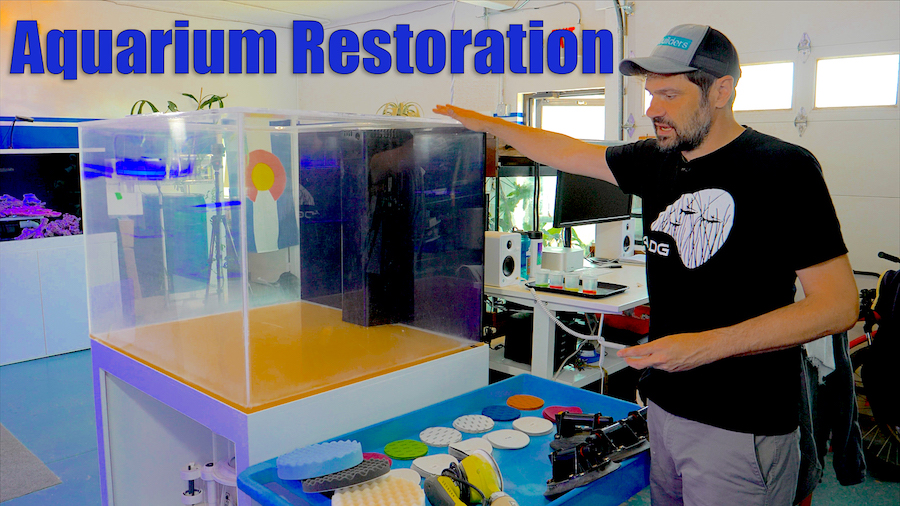Today’s aquariums are predominantly made of glass but many larger tanks and those made in unique shapes and sizes are quite often acrylic. Here in the US we have a huge pool of old and used acrylic tanks that can often be acquired for little to no cost but unlike glass, they can and often do need to be restored to remove scratches and hazing that accumulates over time.
This is precisely the boat within which we found ourselves after inheriting a 15 year old 200 gallon aquarium with a healthy amount of battle scars and in dire need of some much needed restoration. We first shared with you our saga of moving this aquarium, which we thought would be a single, one and done video but we broke the stand the stand broke, necessitating the creation of a saltwater holding pond, and building a new stand for the tank to rest upon.
It’s been a couple months since we’ve updated this aquarium restoration and refurbishing project but we used that time to learn as much as we could about the best way to remove scratches and refinish the acrylic of this handsome ‘fat cube’ shaped aquarium. Matt Conrad of SeeClear was our primary consultant on this project and with his advice and guidance we pieced together all the tools and materials required for bringing this aquarium somewhere close to its former glory.
This was our first ever experience at restoring an acrylic aquarium and this example certainly had some challenging deep scratches and not a single square millimeter of it was spared from smaller scratches and hazing. The total surface area of just the inside of the aquarium is around 12 square feet and we went through nearly a hundred units of sandpaper, a trio of polishing pads and lots of buffing compound.
After around $250 or investment and about a dozen hours of work we were rewarded with a much improved clarity to this aquarium with all of the biggest, deepest scratches removed. We weren’t able to get into the deepest corners or of producing a mirror like finish to the walls but this aquarium is approximately 95% better than how it started and it was well worth the effort. If you follow along this video you’ll learn some tips and tricks on how you too can restore an acrylic tank as there are a lot of deals to be had on these kind of tanks that just need a little bit of TLC and elbow grease to get them back into usable condition.



